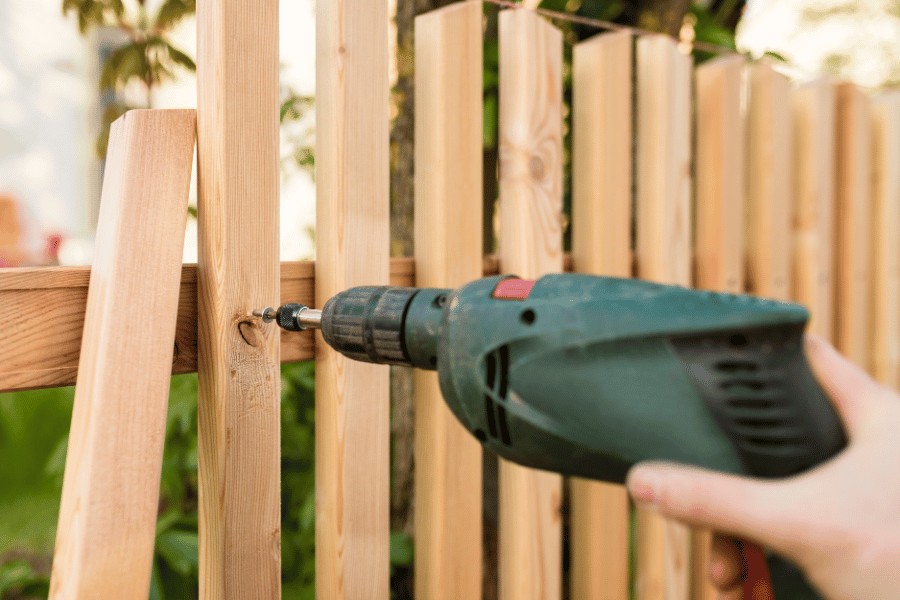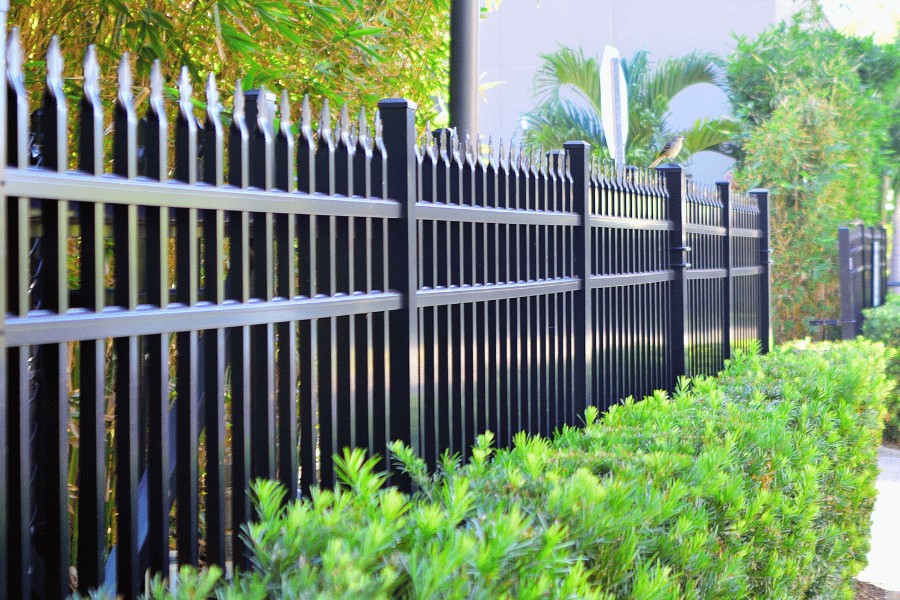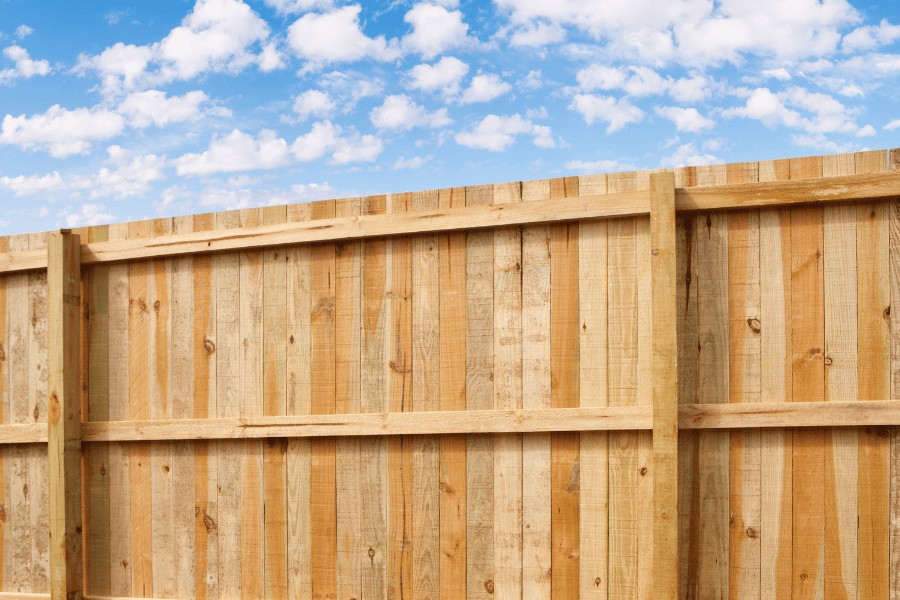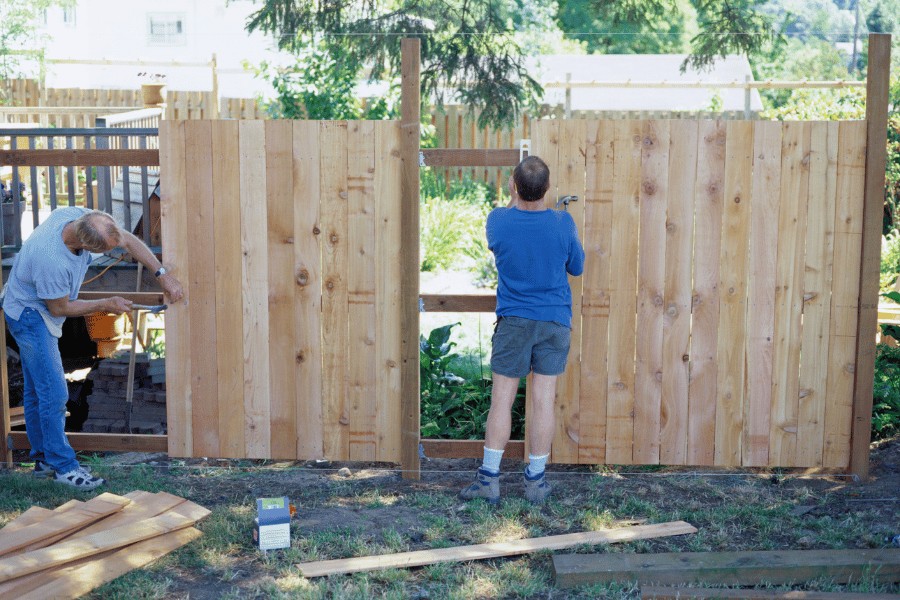How Much Does Building A Fence Cost? Understanding the expenses associated with fence construction is crucial for budgeting and planning. At HOW.EDU.VN, our team of experts has compiled comprehensive data for 2024 to provide you with a clear picture of the costs involved in fence building, from materials and installation to permits and potential hidden fees. Whether you’re aiming for enhanced property value, security, or privacy, our insights will guide you in making informed decisions about fence installation, repair costs, and material choices.
1. Understanding Fence Installation Costs
The overall cost to build a fence is significantly influenced by the fence length required and the associated labor expenses. The amount of material needed for your fence project largely depends on the size of your yard, and the installation cost will reflect that.
On average, you can expect to pay between $4,000 and $12,000 for wood or vinyl fence installation, which translates to roughly $20 to $60 per linear foot. Privacy fences generally range from $25 to $60 per linear foot, while picket fences tend to fall in the $20 to $50 range. Fence replacement can also be a significant expense, typically costing between $30 and $80 per linear foot.
The following chart illustrates the average fence installation costs per linear foot:
| Fence Length (Linear Feet) | Average Cost Installed |
|---|---|
| 50 | $1,000 – $3,000 |
| 100 | $2,000 – $6,000 |
| 150 | $3,000 – $9,000 |
| 200 | $4,000 – $12,000 |
| 300 | $6,000 – $18,000 |
| 400 | $10,000 – $24,000 |





2. Fence Material Costs: A Comprehensive Breakdown
Material selection significantly influences the overall cost of your fence installation. Pricing variations are based on your property’s specifications. Understanding these averages will help you create a realistic budget.
- Wood: Wood is a cost-effective material for a fence if you’re seeking a traditional appearance. Basic options such as pine, spruce, and cedar are among the most affordable. Pressure-treated wood and hardwoods cost more.
- Metal: Highly durable and cost-effective fencing options include iron, aluminum, and chain link.
- Vinyl: Vinyl’s weather resistance and durability are attractive to homeowners. Unlike wood, it doesn’t need annual resealing, making it ideal for rainy and humid conditions.
- Composite: Offering a range of styles, composite fencing is a designer-inspired and durable option. These fences are more costly because of their fiber and reinforced plastic, which allows them to outlast other types of fences.
- Wrought Iron: Known to be the most expensive, wrought iron fences are hard to climb, cut, or knock over, providing long-lasting and secure property borders. Top-quality options contain 99% iron.
Below is a breakdown of the cost per linear foot for different types of fences:
| Material Type | Cost per Linear Foot Installed |
|---|---|
| Wood | $20 – $50 |
| Vinyl | $30 – $60 |
| Composite | $20 – $85 |
| Metal | $20 – $85 |
| Wrought Iron | $50 – $85 |
3. Exploring Various Types of Fences
Fences are available in a variety of styles, each with unique characteristics and price points.
3.1. Privacy Fences
Privacy fences typically cost between $25 and $60 per linear foot for 6-foot-tall wood and vinyl models. An 8-foot-tall privacy fence will cost between $50 and $85 per linear foot. Shadow box, board and batten, board-on-board with overlapping slats, and edge-to-edge vertical or horizontal board fences are common options for privacy fences.
3.2. Picket Fences
Picket fence installation averages between $20 and $50 per linear foot. Aluminum, vinyl, and wood materials are often used for picket fences at heights of three to five feet. Suitable for front yards and garden borders, these fences offer customizable options that may incur additional costs.
3.3. Rail Fences
Rail fences range from $15 to $35 per linear foot, varying by material, the number of rails, and length. Featuring two to four wide rails, this rustic fence is typically made of wood, though vinyl rails are also a popular choice. Rail fences are often preferred for larger properties such as ranches and farms because of their affordability and unobstructed views.
4. Key Factors Influencing Fence Costs
Several elements affect the cost of building a fence, including materials, style, gates, posts, customizations, and other things. Understanding these average costs will help you budget for your project.
- Materials: The cost of metal privacy fences is typically higher than wood. However, this also relies on the local supply.
- Style: Labor and material costs for privacy and shadow fences are higher than for picket fences.
- Gates: Adding multiple gates, security codes, automatic openers, or custom sizes to your project will drive up the cost.
- Posts: Costs are affected by the type of material, number of posts, and installation method used. Posts set deeper than 3 feet in concrete cost more.
- Customizations: Decorative posts, upgraded hardware, and modifications to fences will be extra.
- Terrain: Fence installation costs can be higher in areas with steep inclines, rocks, or poor soil.
- Fence Location: Hard-to-reach installations or installations with obstructions need additional labor and specialized equipment, increasing the price.
- Labor: Costs are dependent on working conditions, fence complexity, the region, crew size, and the contractor’s experience.
- Delivery: Smaller fences may qualify for free delivery within the local area from some installers, but further distances will cost more.
- Survey: Land surveys may cost between $200 and $1,200 to mark property lines, which will show where a fence can legally be built.
5. Estimating the Cost of Your Fence Project
While providing an exact cost to build a fence is difficult, you can gain a general idea of how much it will cost to budget and save up for it.
Below is a cost chart based on 2024 data:
| Fence Material | Stated Above |
|---|---|
| Installation Labor | $1,200 – $1,600 (Labor to install, not inspections or permits) |
| Job Supplies | $500 – $1,000 (Standard supplies like screws, post caps, etc.) |
| Equipment Allowance | $50 – $100 |
| Option: Gate Installation | $400 – $800 |
| Option: Fence Removal | $350 – $600 |
| National Average Price | $3,300 |
| Typical Price per Linear Foot | $5 – $55 |
6. Considering Additional Costs in Fence Construction
In addition to the cost of installation, labor, materials, and the fence itself, you should also consider hidden costs, such as land grading, gates, old fence removal, tree/bush removal, and permits.
Here’s a breakdown of potential added costs to building a fence:
6.1. Adding Gates
Gates are usually considered a specialty feature as they don’t require a lot of work and material. They typically cost around $150 but may be as high as $400 to $1,200, depending on the type and material.
6.2. Land Leveling
Installing a fence on a slope is costly and time-consuming. For this reason, you may either need to level or regrade the land. Prior to fence installation, most homeowners spend between $1,000 and $3,200 to regrade their lawn.
6.3. Fence Removal
You will need to remove the old one when replacing a fence, which costs $3 to $5 per linear foot. Removing 150 feet of fences costs most people, on average, between $450 and $750.
6.4. Tree/Bush Removal
It may be necessary to remove bushes or trees that interfere with fence installation. The average cost for tree removal is roughly $750, though that varies by tree size.
6.5. Painting
A professional paint job can cost between $3.50 and $13 per linear foot for painting and staining, so each project may cost between $750 and $4,250. Painting a fence can be a DIY project to save you money.
6.6. Permits
You almost always need a permit to put up a fence, especially near property lines, even though the permit requirements vary by city and local laws. The cost for a fencing permit is between $20 and $60.
7. Average Fence Costs: A Summary
In the U.S., the average homeowner spends roughly $3,300 to install a wood fence. Overall, expect to pay $10 to $30 for each linear foot, but costs range from $1,600 to $7,000 based on the material, style, size, and other elements.
Also, keep in mind that like the real estate market, there are times of the year when fencing is more or less expensive. The cheapest time to install a fence is during the off-season, such as early spring, winter, and fall. The peak season is typically late spring and summer, so labor and materials may be more expensive.
The American Fence Company suggests pre-made fences are generally cheaper and require less installation time. This depends on your yard type and preferences, though. Considering all pros and cons is crucial for finding the best solution for your needs and budget.
8. Expert Advice from HOW.EDU.VN: Navigating Fence Building Costs
Building a fence involves many factors that can significantly impact the overall expense. At HOW.EDU.VN, our team of seasoned experts can help you navigate these complexities, ensuring you make informed decisions aligned with your budget and specific needs.
- Personalized Cost Analysis: By consulting with our experts, you can receive a detailed cost analysis tailored to your property and desired fence type. This includes an accurate estimate of material and labor costs, as well as potential additional expenses like permits or land grading.
- Material Selection Guidance: Our specialists offer insights into the pros and cons of different fencing materials, helping you choose the option that best balances durability, aesthetics, and cost-effectiveness.
- DIY vs. Professional Installation: We can provide guidance on whether a DIY approach is feasible for your skill level and project scope, or whether hiring a professional installer is the more practical choice.
- Negotiating with Contractors: Our experts can equip you with the knowledge and strategies to negotiate effectively with contractors, ensuring you get competitive pricing and avoid hidden fees.
- Value-Added Solutions: We can also advise on additional features, such as gates, decorative elements, or security enhancements, that can add value to your property without breaking the bank.
By leveraging the expertise of HOW.EDU.VN, you can approach your fence-building project with confidence, knowing you have the information and support needed to make sound financial decisions.
9. The Value of Professional Consultation
Navigating the complexities of fence construction can be overwhelming. Consulting with experts at HOW.EDU.VN can provide invaluable insights and support throughout the process.
- Accurate Cost Estimation: Professionals can assess your property and project requirements to provide a precise estimate of all potential expenses.
- Informed Decision-Making: Experts can offer guidance on the best fencing materials, styles, and features to meet your needs and budget.
- Risk Mitigation: Professionals can identify potential challenges and offer solutions to avoid costly mistakes.
- Quality Assurance: Hiring experienced contractors ensures proper installation and long-lasting results.
10. Methodology
Our information about how much it costs to build a fence uses data from a variety of sources. Because there was so much data available, we combined it to guide you in understanding the costs of building a fence, according to 2024 data.
The sources listed above are just a few of the ones we used to gather most of our information about the cost of building a fence.
11. FAQs About Fence Costs
11.1. Why is yard fencing so expensive?
Materials and labor account for about half of the price per linear foot, making yard fencing expensive. Additional items and the type and style you choose will increase the price.
11.2. What are some reasonable prices for fencing?
Bamboo, vinyl, chain link, and wooden fences are the most affordable options. Each is budget-friendly and economical, providing security at a lower price point.
11.3. Do fences lower property value?
If a fence enhances the visual appeal or other aspects of your home, like privacy, it can increase your home’s value.
12. How Much Does Building a Fence Cost? [2024 Data] – The Bottom Line
If you understand the types, installing a fence is fairly simple and also cost-effective. Remember to consider other elements that go into building a fence because they greatly affect the overall price.
Building a fence can be costly. You can save money by building it yourself, choosing budget-friendly materials, minimizing posts, keeping it simple, and hunting for deals. Also, remember that the averages for fence installation vary, especially by state.
Labor can be the most costly part of building a fence. Building your own fence can save you thousands of dollars. Here are some ideas to keep in mind if you are thinking about adding more things to your home for additional value.
Facing Challenges with Your Fence Project?
Are you struggling to find reliable information on fence costs or overwhelmed by the complexity of your project? Do you wish you had access to expert advice to ensure a successful and budget-friendly outcome?
At HOW.EDU.VN, we understand the difficulties homeowners face when planning and executing fence projects. That’s why we offer personalized consultation services with our team of experienced Doctors and industry professionals.
Connect with Our Experts Today
Don’t let uncertainty derail your fence project. Contact HOW.EDU.VN today and let our experts guide you every step of the way.
- Address: 456 Expertise Plaza, Consult City, CA 90210, United States
- WhatsApp: +1 (310) 555-1212
- Website: HOW.EDU.VN
Let how.edu.vn help you build the fence of your dreams, without breaking the bank.